The Phoenicians originated in the Middle East, located primarily in Lebanon, Syria and Palestine. They are, therefore, Western Asians.
The region was inhabited from at least 8000 BC; or around the Stone Age. This essay is going to focus on the beginning of the Bronze Age (3200 BC) onwards. In accordance with this, the Canaanite Phoenician culture developed over 3600 years, from approximately 3200 BC to 400 AD.
The Ancient Phoenician Civilization
Contents
- The Ancient Phoenician Civilization
- Ethnic Group
- Universal People
- Culture based on knowledge
- The First Global Culture
- Main Contributions of the Phoenicians
- The Phoenicians: Geographic Location
- Geographic Environment
- Time and History
- Language and Writing
- Important people in Phoenician culture
- Social, Economic, Cultural and Political Aspects of the Phoenicians
- Religion and Phoenician Gods
- Economic, Productive and Commercial Aspects
- Work
- Cultural Aspects of the Phoenician Culture
- Bases of Phoenician Culture
- Political Aspects of the Phoenicians

Ethnic Group
The Phoenicians are Canaanites, classified as Western Asians, where we can also find the Amorites, a group with whom they were closely related, in terms of both culture and ethnic composition.
Canaanites, Phoenicians and Punics: people of this ethnic and cultural group called themselves Canaanites, the Greeks called them Phoenicians and the Romans called them Punics.
(Note: although it is a generalized term, we do not use the word “Semitic” to describe the cultures and groups of the Middle East, as we believe that it is a limited term and it has previously been used inappropriately).
Universal People
They were successors and promoters of a great culture of peace and development. They had a broad worldview, as they learned to relate to many other groups of people and cultures. This means that they had open minds and political and diplomatic skills. They adapted to many different climates and geographic environments. They were not ethnocentric.
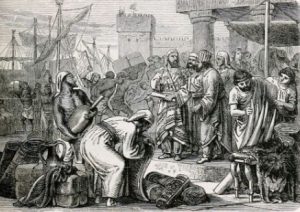
Culture based on knowledge
They were people of letters, alphabets, books, libraries, inventions and discoveries, and scientific, philosophical and religious thinking. They were people who lived off knowledge.
They created cities that are still around today (Byblos, Beirut, Tyro, Malaga, Ibiza, and Cadiz amongst others). They promoted trade and made great contributions to the organization of the social, economic, political and religious life of the ancient world. The Phoenician culture was enormous and spread all around the world.
The First Global Culture
As a result of their expansion throughout the basin of the Mediterranean Sea and the coast of the Atlantic Ocean, they were the first multinational global culture in history. They covered the Middle East, Northern Africa, the South and West of Europe and the surrounding islands. They gave a sense of identity to a large part of the world through sharing trade, their alphabet, and their political, social, philosophical and religious ideas. The Phoenician culture is a fundamental component of Mediterranean culture of the past and present. Even today we can still identify the continuity and evolution of the Phoenician thought process in many groups and cultures.
Main Contributions of the Phoenicians
The Phoenicians made important contributions in terms of thought process, as well as social development and the production of material goods, which we can see in the following examples:
- Aspects of thought doctrine: the alphabet, astronomy, medicine, and stoic philosophy.
- Social development: the expansion of international trade, diplomacy, orderly life in cities, and Phoenician democracy.
- Material goods: glass, purple ink to dye fabrics, bireme and trireme ships, amongst others.
The Phoenicians: Geographic Location
The Canaanites lived in the region that today corresponds to Lebanon, Syria, Palestine-Israel and part of Jordan, from at least 3200 BC. In ancient times they shared the region with the Aramaeans. Currently the indigenous population of this region is descended from the Phoenicians, Aramaeans and the Arabs.
Expansion- From the year 1200 BC they expanded throughout the whole Mediterranean. Currently 6% of the inhabitants of the Mediterranean have Phoenician genes, in some places the majority of the population has these genes, such as in Cyprus, Sicily, Malta, and northern Morocco.
Important cities for the Phoenicians: in the Middle East: Byblos, Sidon, Tyro, Ugarit; in the north of Africa: Cartago, Utica; in Spain: Cadiz, Malaga, Cartagena, Villaricos, Ibiza; in Portugal: Alcácer do Sal.
Geographic Environment
The Phoenician climate corresponds to what we call today “Mediterranean climate”.
The areas inhabited by the Phoenician culture in the Mediterranean climate have two main characteristics: coastal and mountainous.

The Mediterranean climate on the coast is characterized by being dry and hot in spring and summer. In autumn and winter it is damp, rainy and mild. The earth is fertile as there are many rivers that originate in the mountains. On the coastal plain one can find vegetation such as grass, bushes and shrubs.
The Mediterranean climate in the mountains is mild throughout the majority of the year, although in winter it is cold and the highest mountains are topped with snow. In the mountains there are many pine forests with cedar and fir trees, as well as fruit trees.
Time and History
Canaanite culture can be located by archaeological finds from 8000 BC, mainly in the form of agricultural villages. From the year 3200 BC onwards, the urban stage began, where we can find some of the worlds oldest cities such as: Ebla, Byblos and Jericho. The Canaanite culture spread throughout the Mediterranean from the year 1200 BC. At the end of the millennium BC they became part of the Roman Empire, although they conserved many of their own characteristics – including their language. At the end of the Roman Empire, in 400 BC, Phoenician culture developed in different ways depending on the region, whether it was in the Middle East, Northern Africa, the Mediterranean islands or the Iberian Peninsula.
Language and Writing
Language of the Phoenicians
The Phoenicians’ language was called Canaanite. The Canaanite languages had several stages of development: the first was archaic Canaanite which was spoken until around 2000 BC, subsequently Classical Phoenician was developed (Classical Canaanite), whose main characteristic was that it incorporated many words and expressions from the Amorites (predecessor of the Arameans). From the year 1000 BC, interaction between Phoenicians and Arameans became closer (Amorites from the first millennium BC) this led to the formation of the Phoenicians and the Arameans of the first millennium BC, who both shared many similarities. The Aramaic language gradually started replacing the Phoenician, until it became dominant around the year 200 BC, although some villages carried on speaking Phoenician until the start of the new millennium. Additionally, in the Western side of the Mediterranean, Northern Africa and Spain from around the year 1200 BC Phoenician (Canaanite) was primarily spoken, first the classical version and later on Western Phoenician was spoken (Punic, Carthaginian and Iberian), or in other words, in regional variations were invented. There are records that in the year 400 AD there were still parts of Spain and Northern Africa in which some variations of Phoenician were still spoken.
- In Mesopotamia: Acadian. Variants: Classical Acadian, Assyrian, and Babylonian
- In Syria, Lebanon, Palestine: Canaanite and Amorite
- In the Arabian Peninsula: Arabic
Writing of the Phoenicians
Phoenician texts were written in the Phoenician alphabet that they invented and developed.
It was composed of 22 letters and read from right to left. Some of the first discovered Phoenician alphabets have been dated around 1600 BC, where we currently find the countries Lebanon and Syria.
Important people in Phoenician culture
(Many of them have been incorrectly called Greeks, however they are Phoenician).
Phoenician scholars and scientists
- Thales of Miletus. Rational philosopher settled in Ionia.
- Zenón of Kitión- Philosopher-Developed stoic philosophy.
- Pythagoras – Mathematician, musician, philosopher.
- Porfirio of Tiro- Neo-Platonic philosopher.
- Antipater of Tiro. Stoic philosopher.
- Apolonio of Tiro. Stoic philosopher.
- Aspasio of Tiro. Historian.
- Filón of Byblos. Historian.
- Marino of Tyro. Scientific geographer.
- Magón of Carthage. Agronomist.
- Sanconiatón of Beirut (Sanjuniatón). Historian and priest.

Royals and legendary Phoenician characters
King Ibrim (also known as Abram or Ebreum). He governed the city of Ebla (Syria). He expanded trade routes, science and arts, 2500 BC.
King Hiram – King of Tyro, wise and powerful. Their ships sailed across the whole of the Mediterranean.
Elisa (Dido) – Founder of the city of Carthage, which would later on be the center of a great Empire.
Aníbal Barca – Carthaginian, military strategist who successfully faced the Roman army.
Cadmus- Prince of Tyro who brought the alphabet to the Greeks.
Europa – Princess who had a whole continent named after her
Eshmún – The doctor.
Taautos. Wise promoter of civilized life. He is considered as a promoter of ordered ways of thinking, acting, and talking. His teachings allowed science, art, laws, society and religion to develop.
Social, Economic, Cultural and Political Aspects of the Phoenicians
Social Aspects and Daily Life of the Phoenicians
Phoenician society was highly organized. They were a hierarchical society that formed around a social scale, which involved:
- The group of leaders: Kings, aristocrats, priests or judges
- Assemblies or councils
- Different types of officials
- Free workers: merchants, sailors, farmers, stockbreeders
- Wage workers: peasants, servants
- Enslaved workers: prisoners who served the Kings
Food: What did the Phoenicians eat?
In accordance with their activities and some texts, we can predict that the Phoenicians ate salt beef, ram, fish, octopus, milk, cheese, honey, wheat bread, beer, wine, olive oil, oranges, grapes, figs, pomegranates, dates, and nuts.
Family
Phoenician families changed throughout their history, but in the classical period (1,200 to 46 BC), the family consisted of father, mother and children. Both men and women were actively involved in the family.
Education
Based upon their way of seeing the world (cosmogony), the Phoenicians focused on fulfilling their mission of being inventors and discoverers and spreading their knowledge all over the world. The Phoenicians did countless tests and promoted culture and civilization in the Mediterranean and in many different groups of people throughout the world. They developed important skills and organization methods that made them great teachers with disciples from all walks of life; places, cultures, languages, and behaviors throughout the whole length and breadth of the Mediterranean, which is what makes them a culture of diplomacy, knowledge and education.
Education of children and young people
This essentially influenced the education of youngsters who received instructions to be creative in productive activities, trade, society, politics, and diplomacy and in the search for knowledge.
Religion and Phoenician Gods
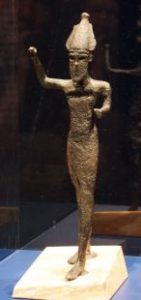
Religion was very important for the Phoenicians and influenced the beliefs of many groups of people. The Phoenicians had universal Gods and earthly Gods. The earthly Gods were sons of the universal Gods.
Universal Gods: Father God (El), the Celestial Mother (Ashera, also known as Maryam, which means Lady of the Sea),
Earthly Gods: Son God (Baal, Adonai), Virgin God (Anat, also known as Astarte).
Economic, Productive and Commercial Aspects
Barter, trade, coins, banks.
Phoenician economy was based upon trade, at the beginning they bartered, and then began to use coins, called Shekel. The trade of goods was done between different Phoenician cities with other villages. In this, they exchanged products made by themselves as well as products from other countries.
The King and the priests of each city regulated the economy; later on the economy was directed by judges also known as magistrates.
Trade routes
Phoenician trade was done along sea routes and land. To promote maritime trade they built a big fleet and many ports along the Mediterranean Sea and the Atlantic coastline along Africa and Europe. Overland trade was done by groups of traders who took turns to bring materials over the Middle East, Africa, Central Asia and even to India.
Phoenician trade products
The economy and trade of the Phoenicians was based upon:
In the Bronze Age: 3200 – 1200 BC
- Exploitation of the abundance of the forests: cedars from Lebanon and vegetable resins.
Mining products and minerals: metals such as gold, silver and bronze; obsidian and precious gems; bitumen (petrol oil), salt. - Agricultural and secondary products: oil, wine, figs, dates, grapes, honey, olives, barley, wheat, pomegranates and different fruits.
- Fish, cattle and secondary products: different types of fish, octopus, mollusk ink for dying, horses, cow and goat livestock, milk, cheese, wool.
- Manufactured products: bowls and cups made from alabaster and stone, linen and wool materials and garments, chairs and tables made from ebony and other pieces of furniture, carts, metal work, ceramics, crafts. They had highly specialized industries such as ivory carving, textile products and for purple dyes.
In the Stone Age: 1200 – 330 BC:
Alongside the aforementioned we can add:
- Mining products and minerals: tin, lead, malachite.
- Manufactured products: iron products, perfumes, ointments, precious garments, hyacinth mantles, tapestries, and papyrus. We can also add highly specialized industries, which were required in different parts of the world: glass and glass products, boats and navigation knowledge, engineering and the construction industry, written documents and scribes.
Work
They were hard-working people, some worked in the countryside, others in the cities and others in the boats that they navigated through the seas, and there were also people who had specialized jobs.
Work in the countryside.
The people who worked in the countryside would plant seeds and raise cattle. What did they plant? Mainly wheat, olives, fruits such as oranges, grapes, figs and pomegranates. What animals did they raise? Horses, sheep, cows and bulls. They also produced honey. Both men and women worked in the countryside.
Work in the city.
The people who worked in the city would have a trade such as: blacksmiths, carpenters, glaziers, weavers, potters, etc. They organized themselves into different working groups, so there was a group of blacksmiths, a group of carpenters, etc. These groups were called guilds and each had a master, a workshop master, apprentices and helpers. Normally children learned their trade from their parents. In the cities the men did the toughest work, and the women worked more with ceramics and fabrics.
Trade was a very important activity in cities and ports, and both men and women participated.
There were people who did special jobs, such as doctors, scribes, philosophers and priests, amongst others. We know that both men and women alike could be priests.
Work at sea
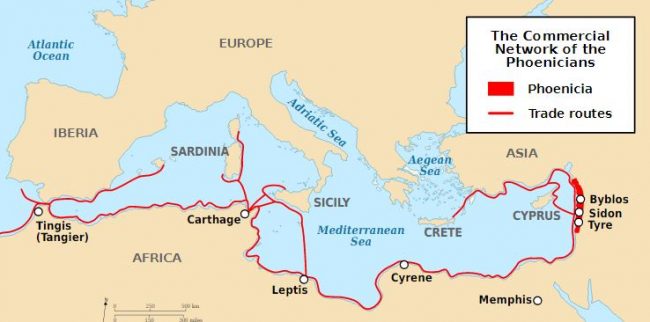
The Phoenicians were great sailors, which means they knew a lot about ship building, navigation, fishing, climate, and astronomy to get their bearings. They also needed to be friendly and diplomatic in order to be well received by the different groups of people in the different countries they arrived in. And moreover they needed to know how to trade, i.e. buying and selling products in many different places. Work at sea was primarily done by men.
Cultural Aspects of the Phoenician Culture
When we talk about the Phoenicians we are referring to a culture. Phoenicia was not a country, but a way of life. The Phoenician Canaanite culture developed in the Middle East from at least the year 3200 BC. From the year 1200 BC they expanded and were the first culture that encompassed the whole of the Mediterranean and this lasted over 1000 years. Since then the Phoenicians were people of Canaanite origin who lived in the Middle East but also people who settled in various parts of Europe, North Africa and the islands in the Mediterranean sea, in addition to the people who adopted their culture and joined the “Phoenician style”. They all shared the same culture, which includes political, social and economic organization, as well as language, beliefs and customs. This is why people talk of Phoenicia and the Phoenicians without referring to one country, government or religion, unlike what happened in Egypt or Mesopotamia. What gave identity and cohesion to Phoenicia was the expansion, presence and development of a shared culture over a large amount of land (Middle East, North Africa, Iberian Peninsula, and the islands in the Mediterranean sea) and for over a thousand years.
Bases of Phoenician Culture
Mission
The Phoenicians described their mission in life:
- To be inventors and discoverers
- To understand and organize the world
- To spread out all over the world
- To be an example for others
Participation
The participation of men and women is the basis of everything we have in the world.
The Phoenicians believed that the union of masculine and feminine forces created the universe.
They believed that this world is looked after by the Son of God and the daughter of God (the virgin).
They believed that men and women should collaborate respectfully and worship together in order to create daily life.
International relations
The Phoenicians had a cosmopolitan culture. Due to their dispersion throughout the known world they had a broad view of many different cultures and cultural practices.
They also practiced bonding and diplomacy to interact with other people in a peaceful and continuous manner. This interaction dynamic was crucial for their expansion throughout the world and to consolidate their commercial, political and cultural actions.
The Phoenicians developed extensive knowledge, which provided useful to contact different cultures and not come into conflict with them, or rather to maintain interactions and long-lasting relations, which is why bonding and diplomacy were instrumental to perform commercial, political and cultural activities. Their knowledge of the treatment and relations between nations allowed them to develop the expansion, permanence and cultural influence in the western part of the Mediterranean: North Africa, the islands and the Iberian Peninsula, as well as in other regions and with other cultures.
Philosophical thought
Phoenician philosophy had several expressions; within the same culture not everybody had the same way of thinking:
Naturalistic philosophy: Nature is the origin of everything.
Religious philosophy: Gods are the origin of everything.
Personal philosophy: Everybody is responsible for his or her own selves; an example of this is stoic philosophy. “The atmosphere of dynamism and the cosmopolitan culture which has always impregnated the urban layers of Phoenician culture was the most appropriate means for the emergence of what has become one of the most widespread and practiced philosophies in history: stoicism.”
Political Aspects of the Phoenicians
Phoenician politics was carried out under different systems depending on the era or the region. These systems were: monarchy, oligarchy, and democracy.
Political functions were carried out by the monarchy: by Kings, aristocrats and priests: judges; in democracy: magistrates and citizens.
In all cases the power was not absolute because assemblies were also involved in decision-making. One could say that the Phoenician political system was hierarchical and participatory.
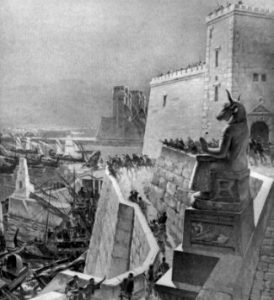
The Phoenician Political System
The Phoenicians lived in city-states, which means that each city had its own leaders. The government system varied throughout the centuries and the regions. In the Middle East the dominant political system was monarchy and aristocracy, which means that they were governed by Kings and hereditary privileged classes. But in Western settlements and colonies (Carthage, Iberia), oligarchy was the dominating system, which means that the government consisted of a few appointed people such as judges: they were the representatives of the most powerful families, mainly traders, priests and members of the military. From the 6th Century BC onwards, Eastern and Western Phoenician cities started to establish democratic systems, of which the best-known example is Carthage.
Monarchy (since approximately 3000 BC)
Kings and Queens were usually the leaders, who often also had the role of priests. On other occasions the Kings and priests were different people. For this reason, they had palaces and temples. They also had public rooms where the Kings attended to the inhabitants of his kingdom and took care of their problems. But the Royals didn’t govern alone, in order to decide many things they met with the representatives of families through the Council of Elders, whose members were elderly people who were considered wise and mediated between the Kings and the inhabitants; they also had a Youth Council, who expressed their views on different aspects of the city. There are records that on some occasions people dismissed the Kings through the Councils when they failed their duties. These sessions were conducted in a special assembly room.
Duties of the Kings and Queens
The King had the obligation to be wise and fair. He must build and keep in order the city, temples and ports. He must look after orphans, widows and the disadvantaged. He must listen to the needs of the people.
Oligarchy (from 1200 BC)
When the Phoenicians expanded westwards (to the Mediterranean islands, North Africa, Iberia), they stopped forming monarchies and no longer needed Kings as they needed lots of freedom to travel, trade and govern themselves. Instead they formed local governments consisting of the most powerful families of merchants (oligarchy) in a Council of Judges (also called magistrates) and meanwhile other groups could express their thoughts in the People’s Assemblies.
Democracy (from the 6th Century BC)
As society developed and became more complex, democracy established itself as a new form of government that fulfilled society’s needs and challenges. The democratic system was divided into two powers: executive power and legislative power. Both powers divided legal functions and each was assigned specific tasks.
Executive power
Executive power consists of a head of State (President) and judges. To appoint the head of State the judges gathered together and chose one of themselves. The judges were elected for their wealth and intellectual, social or military merit. It can be said that the highest levels of government chose their members through a meritocracy, i.e. by the evaluation of the achievements of the candidates.
The executive power designed, organized, operated and evaluated various governmental plans. These activities were carried out in a Council of Judges, in which the Head of State was the President of the Council. Each of the judges was responsible for a particular subject, for example: defense, taxes, temples, construction, navigation, etc. In addition, a group of these same judges attended the civil courts, which dealt with the demands and problems of local people.
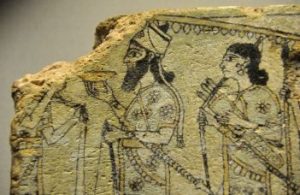
Legislative power
This was made up of two chambers: the High Assembly and the People’s Assembly.
The High Assembly
This was also known, following the ancient tradition, as the Assembly of Elders, Seniles or Senators (the word senator derives from senile, i.e. old). Formed by nobles who made laws and made decisions on many political and social issues. Within this chamber there was a Legal Council that analyzed special cases, and which was also responsible for punishing any abuse of power by influential families who tried to avoid laws and mistreat other individuals.
The People’s Assembly
This followed the old Youth Council. All citizens were represented within this council. As time went by, the People’s Assembly started gathering strength and expanding its functions (around the 3rd Century BC), they would gather spontaneously, decide the topics they wished to deal with, and even choose the generals and judges, and they would reach conclusions on various issues by applying Phoenician law, of which the best known is the Carthaginian.
In Carthage democracy lasted around 300 years. It began in the 5th Century BC (approximately around the year 450 BC) and ended with the Roman conquest in 146 BC (2nd Century BC).
Strengths and Weaknesses of Phoenician Democracy
Strengths
According to Aristotle (Greek philosopher 384-322 BC) through the People’s Assembly of Carthage, “the voice of the people was predominant in the deliberations” and “the people themselves solved problems”. Aristotle praised the political constitution of Carthage as one of the most advanced and functional of his time. The political system, the Constitution and the laws were shared in different regions and Phoenician cities, “Aristotle refers to Carthage but the text should be largely applicable to the Phoenician city-States” (Blázquez, 1999).
Weaknesses
Polybius (Greek historian 200-118 BC) considered that the excessive discussions about democracy in Carthage weakened it in its fight against Rome. The Greek philosopher suggested that the decisions made by the Roman Senate were faster, more thoughtful and more efficient than those that came from the Carthaginian People’s Assembly. Polybius thought that this difference was instrumental to the survival of these nations, especially when it came to matters of war (Wagner, 1999). According to this author, this feature was essential in order for Rome to win the war and conquer the Phoenicians.
The Importance of the Assemblies and Councils in Phoenician Society
The formation of assemblies and councils was a feature that was present throughout the whole of Phoenician history. They were always present in the political and social organizational structures. Its composition and objectives varied over time.
During the period of monarchy, the Council of Elders and the Youth Council advised Kings and Queens, where a wide range of people participated to represent different groups in society. In the regions governed by oligarchies the Council of Judges was in charge (also known as the magistrates).
Later on, (6th Century BC) the forms of government developed more defined democratic structures, which happened through process of recovery, integration and reorganization throughout history. The Council of Elders gave rise to the High Assembly (or senators) formed of representatives of the most important traders, politicians and high-ranking military. The Youth Council gave rise to the People’s Assembly, which was formed of representatives of different groups in society such as the small traders or craftsmen and skilled tradespeople. These assemblies were the legislative power, which at the time was clearly separated from executive power. The concept of judges was used only in executive power, where one judge would be President. They gathered in the Council of Magistrates, where they made decisions and strategies and assessed progress in different aspects of Government.
The presence and importance of the assemblies was so great amongst the Phoenicians that even religious mythology relied upon the Divine Assembly, or Assembly of the Gods. In this Assembly decisions were made by the Father and Mother Gods, the Son and Daughter Gods, messengers (angels) and different universal forces such as wisdom, creativity, chaos and death. The Divine Assembly would meet in the Palace of Monte Cassius, also sometimes known as Monte Lalu (Olmo Lete, 1998).l
